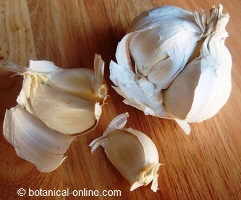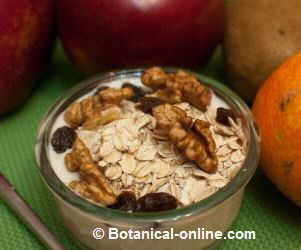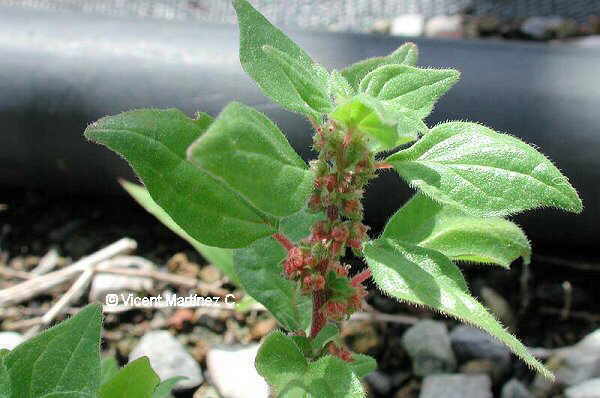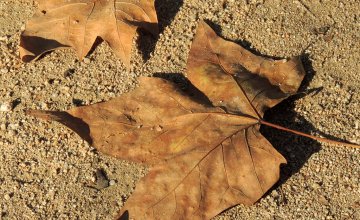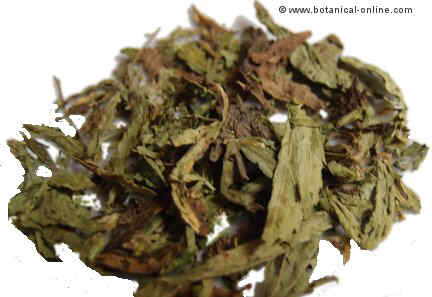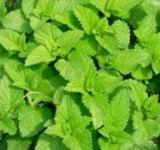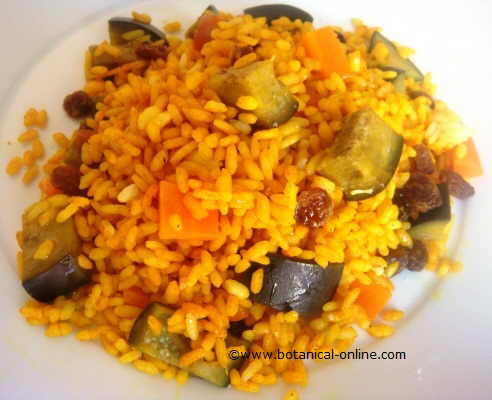Contents [show]
What is a s boxwood?
Characteristics of boxwood
Boxwood belongs to the family of Boxwood, and together with gender Pachysandra, is one of the most commonly used ornamental plants. Its perennial nature and tolerance to pruning make them ideal for cutting shapes and decorating gardens. For the same characteristics, boxwood is a very common bonsai.
In the wild, boxwood grows in less traveled places, deep and dark forests. It is said that, without the hindrance of Man, it is a very long-lived shrub that can reach the age of 100 years.
Boxwood wood is very hard, suitable to make walking sticks and many handicrafts
Common English name:
Boxwood, box, Common box, box tree, dutch boxe, dudgeon
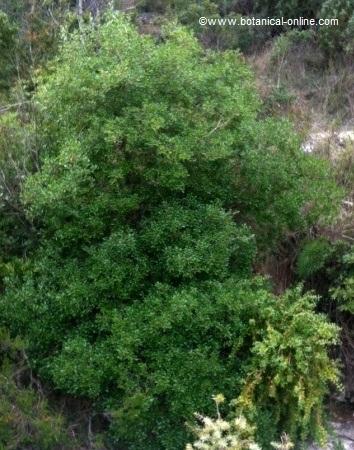
General appearance of a boxwood in the wild
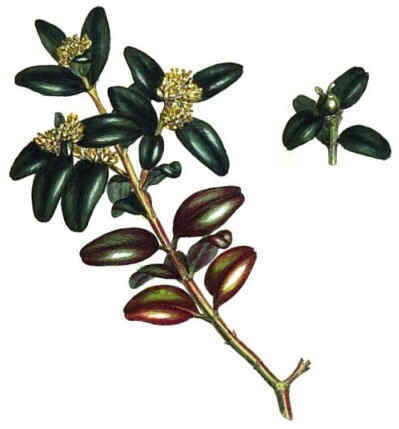
Botanical illustration o a flowering boxwood (left) and branch with fruit (right).
Scientific name: Buxus sempervirens L.
Other taxonomic names:
– Buxus humilis
– Buxus colchica Pojark.
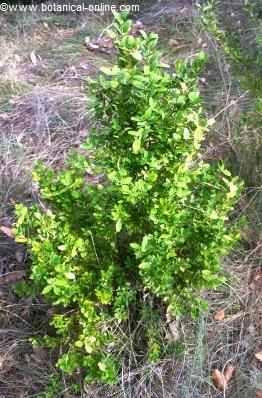
Photograph of a young boxwood.
Etymology: Genus name “Buxus” could derive from “buxeus”, which in Latin means grayish or whitish color. The name”sempervirens” alludes to its evergreen nature.
Family: Boxwood family (Buxaceae)
Origin: Native species of southern Europe, West Asia (reaching the western part of the Himalayas) and North Africa. Cultivated for centuries as an ornamental plant.
Habitat: native of deep, dark forests. Mainly we found it with oak, pine and beech in somewhat humid places, little chalky and rich in nitrogen.
Distribution: Mediterranean, across Europe, central and southern region; including Britain, Albania, northern Africa and western Asia.
Description of boxwood
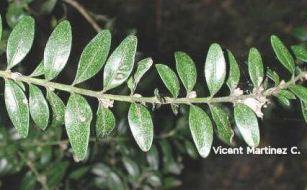
Photography of branch of boxwood, where its opposed leaves are observed
Boxwood (Buxus sempervirens) is an evergreen shrub, slow growing, 1 to 6m. high, which is characterized by its dense foliage, evergreen, being native from dark places and deep forests.
Monoecious, plenty of branches and slow-growing shrub. The trunk has corky bark. Wood is yellow and covered with a gray, rough and fissured bark.
Branches are round, but appear to have four corners due to its leaf marks. It is hairy at the internodes and at the base of leaf petiole.
Boxwood leaves are simple, opposite, shortly petiolated and lustrous. These are ovate to elliptic, green or glabrous and paler on the underside. In autumn, the leaves turn a reddish color. Limbo is between 1.3 – 2.5 cm. long by 0.7 – 1.2 cm. wide.
The plant blooms in late winter or spring, between February and April. Boxwood flowers are sessile and unisexual. Born in dense axillary clusters of 5 – 6.5 mm. diameter. Flower parts: 4 sepals fused at the base, 4 stamens opposite to calyx lobes, 1 pistil and 1 superior ovary. Flowers are pollinated by bees and insects.
The fruit is a capsule, leathery and similar in size to a pea, rounded, with 3 horns on the tip, which are persistent stigma remains. Size 8 – 11mm. x 6 – 8mm.
Inside, it contains six trigonal seeds, smooth and black. The seeds ripen in September. When ripe, the fruit opens explosively.
What parts of boxwood are used?
– Leaves, bark, wood and to a lesser extent, roots.
The leaves are harvested in spring, before plant flowers appear, and dried to preserve them for medicinal purposes.
The bark is dried to add to tea and herbal teas.
Boxwood uses
- Edible Uses: boxwood is NOT an edible plant. However, its leaves as a substitute for hops were formerly used in France for the manufacture of beer.
It is known that animals feed on leaves of boxwood become intoxicated (horses, cows, dogs). It can even cause death of the animal.
- Medicinal Uses: Boxwood leaves are hot, dry and astringent, but they are not practically used in medicine because too excessive doses cause symptoms of poisoning.
Boxwood is considered a liver bitter tonic . Boxwood main recognized properties are: antipyretic (fever), sudorific, cholagogue, antirheumatic, worming, antiseptic and, in high doses, purgative.
it appears in medieval texts cited as a medicinal plant, because it was considered anti-alopecic, so it has been used as a remedy for dandruff and seborrheic dermatitis of the scalp.
In spite of its medicinal properties, due to its potential toxic effects, is not a common plant in the herbalists recipes, because it can cause diarrhea or colicky pain.
It is a plant that can cause abortion, so it should not be taken during pregnancy.
| Boxwood is not a plant for pregnant women, infants or children under 15 years. Because it is a toxic plant, its use is restricted to medical prescription and under the supervision of health professionals. |
- Timber Uses: the wood is highly valued for its resistance, making one of the finest and heavy timbers (it floats in water). It is two times harder than oak (Quercus spp.) and is used to make canes, tools, silverware and handicrafts.
- Ornamental plant: It is resistant to pruning, so it is used in the art of topiary. Decorative shapes are cut or it can make the characteristic separators in French style gardens.
The plant is also used to make fences, and forming large clumps, being a natural barrier.
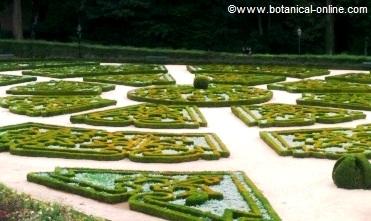
With Boxwood we can create different patterns and separations, reason why it is widely used in the decoration of gardens.
Composition of boxwood
All parts of the plant are poisonous, particularly the bark and leaves. It contains:
- Steroidal alkaloids: buxine, parabuxine, parabuxinina, cloprptobuxine, buixidine, buxenone, buxandrine, buxinamine, bebeerine, bebbuxine, buxalphine, buxamine, buxaminol, buxanine, buxatine, cyclovirobuxineD and derivatives.
Boxwood alkaloids are bitter tonics, among which buxine. Buxine is chemically very similar to the berberine found in the celandine.
Steroidal alkaloids give the plant cardiotonic properties, sudorific, laxative, antirheumatic, antiseptic, antimalaria and cholagogue. Because of their sudorific properties, it was used formerly for malarial fever.
- Essential butyraceous oil, which gives off a foul odor.
- >Tannins
- Flavonoids
| Botanical classification of boxwood | |
| Kingdom | Plantae – Plants |
| Subkingdom | Tracheobionta Flower plants |
| Superdivision | Spermatophyta Seed plants |
| Division | Magnoliophyta or Angiosperms |
| Class | Magnoliopsida or Dicotyledonous |
| Order | Buxales |
| Family | Buxaceae |
| Gender | Buxus |
| Species | B. sempervivens |
![]() More information on boxwood.
More information on boxwood.

